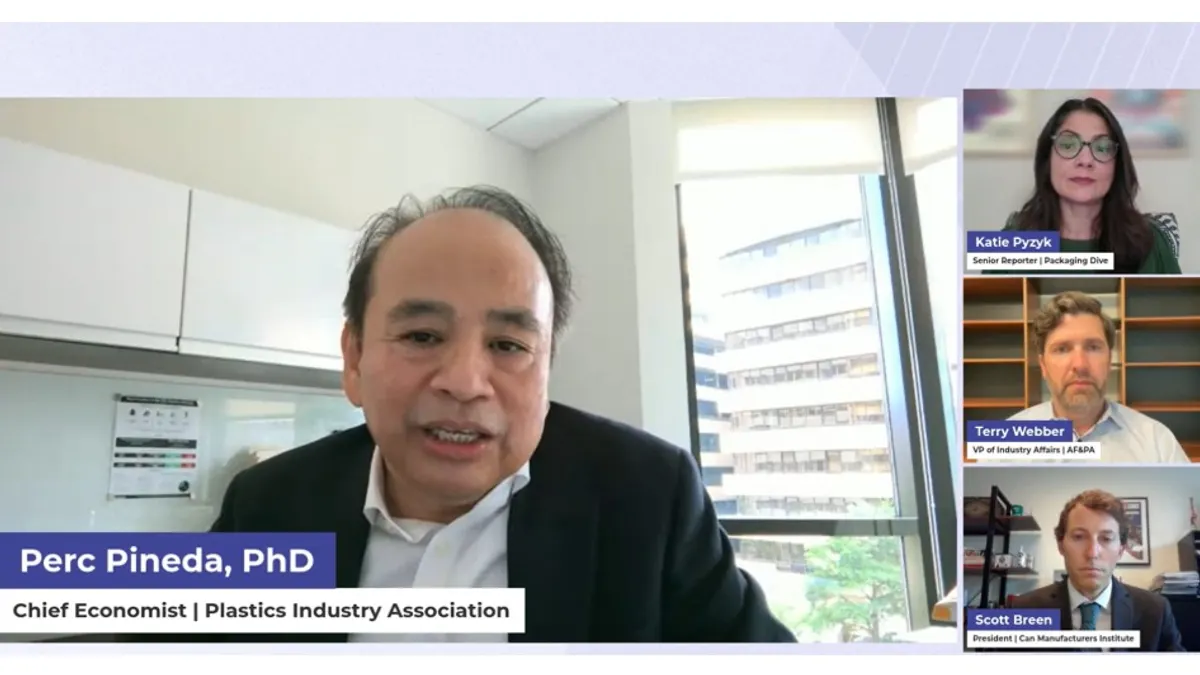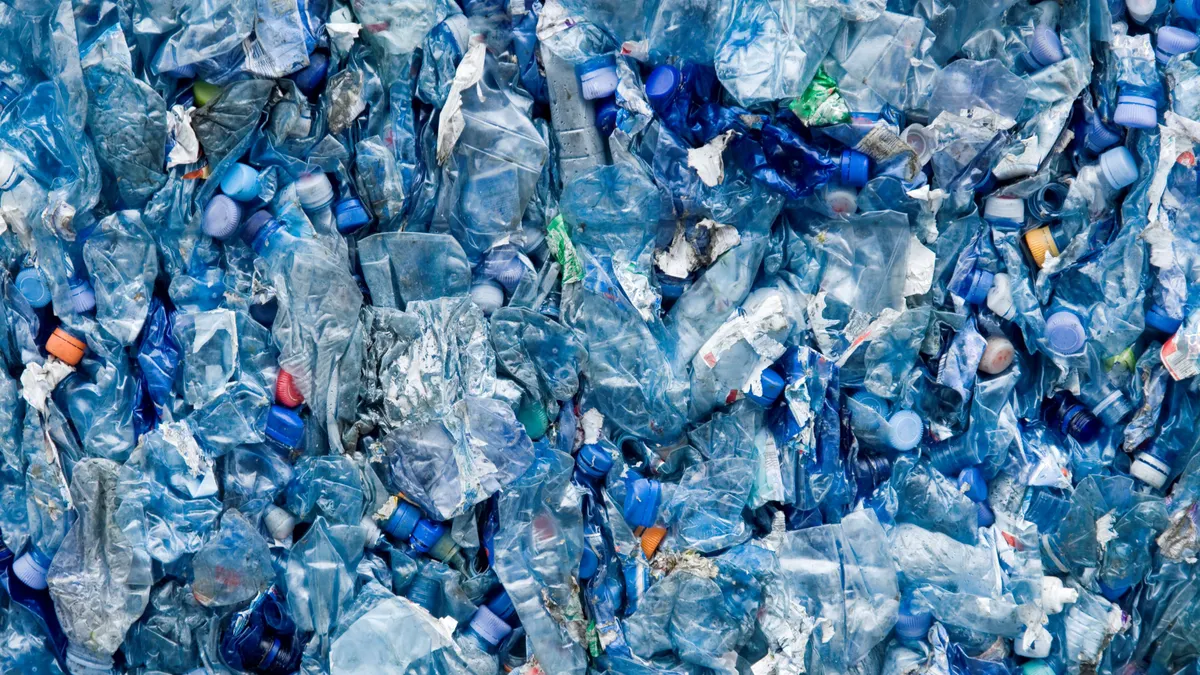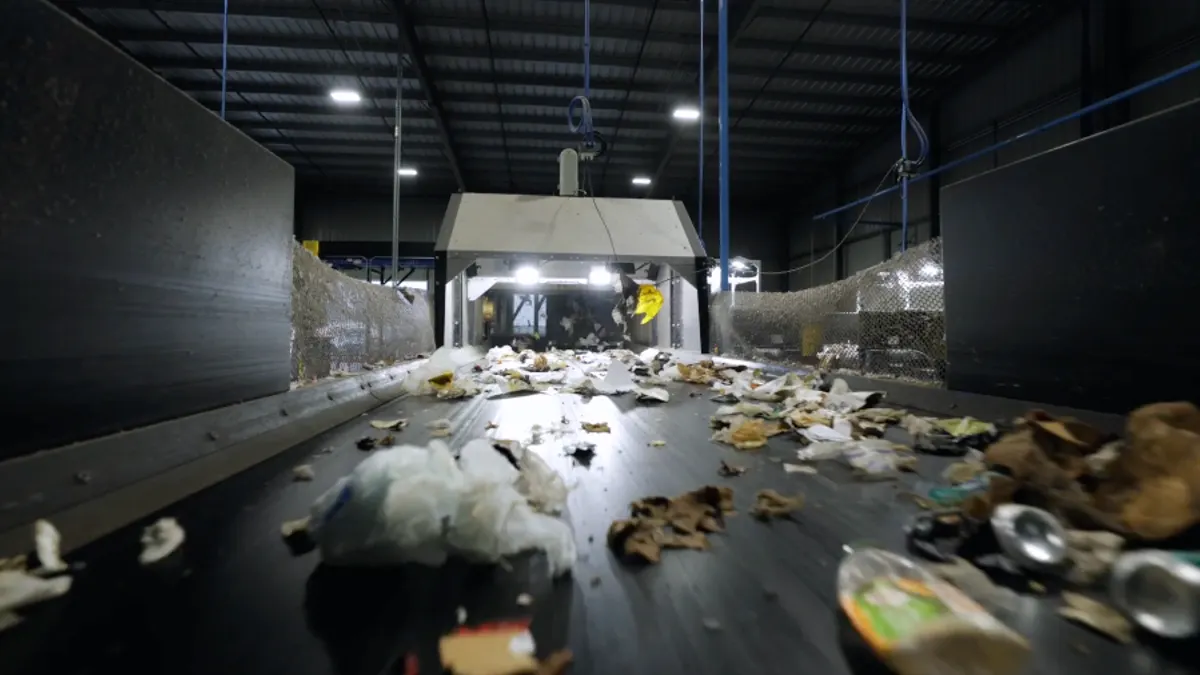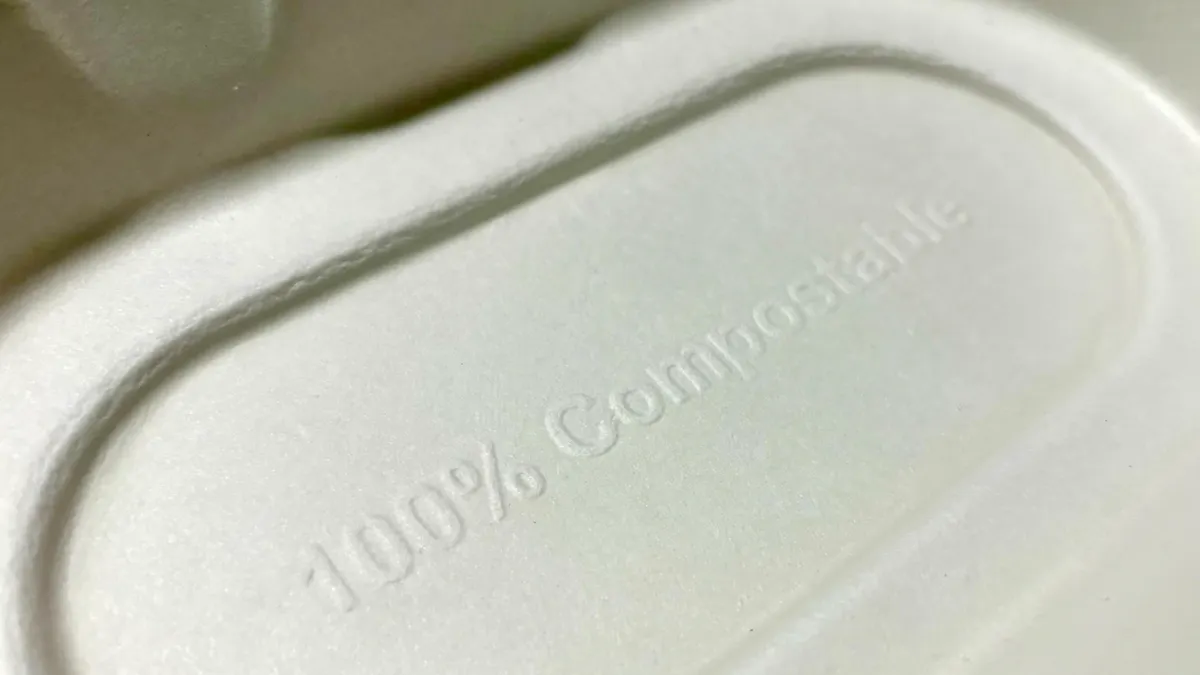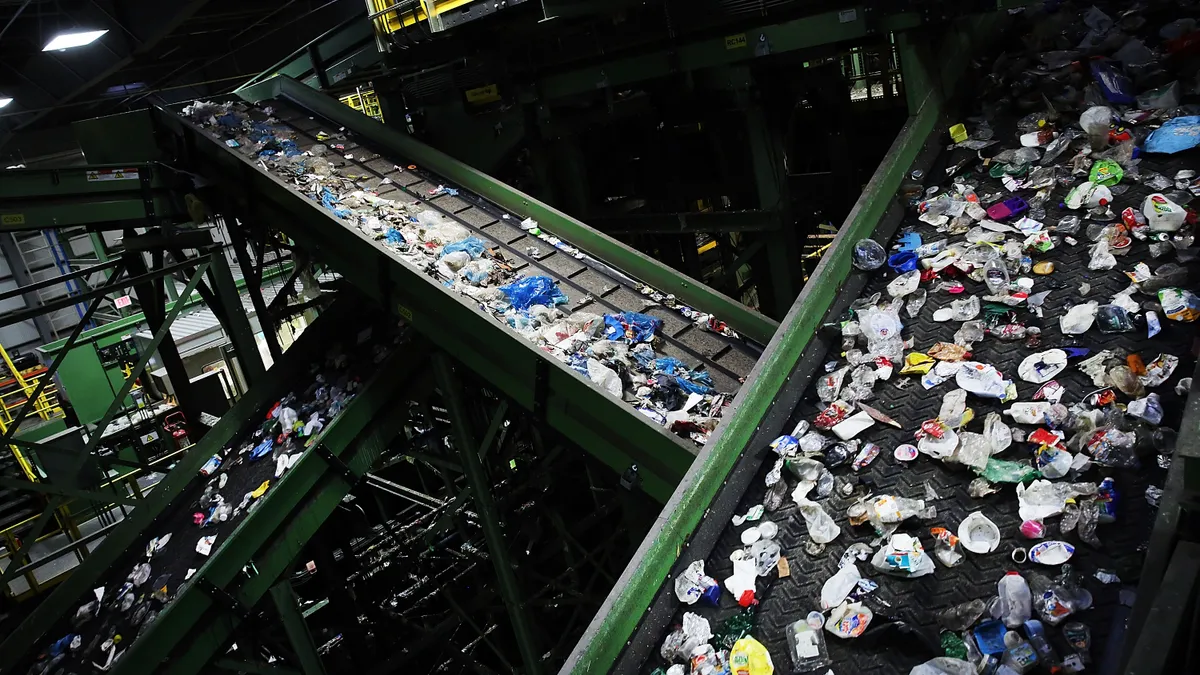Editor’s note: This story is part of a series highlighting takeaways from a July 23 virtual event hosted by Packaging Dive, Supply Chain Dive, Manufacturing Dive and Trucking Dive. Register here to watch the replay on demand.
It’s normal for commodity markets to ebb and flow due to a variety of domestic and global factors, but recent tariff impacts and changes in the U.S. economy in 2025 have thrown a new wrench in markets for virgin and recycled aluminum, plastic and fiber commodities.
Experts in plastics, paper and metals offered an overview of these factors during the “Supply Chain Outlook: Trends and Risks to Watch in 2025” event on Wednesday.
The Trump administration’s tariffs have resulted in market uncertainty, and that’s playing out in different ways depending on the commodity, speakers said.
These were some key takeaways from the event:
Varied trade exposure, but also opportunities for US plastic manufacturing
In the plastics industry, tariff exposure varies by sector. For example, plastic resins face less uncertainty compared with the machinery and molds sectors, said Perc Pineda, chief economist at the Plastics Industry Association.
“By and large, the plastics industry's exposure to trade is only about 20%,” he said, noting that there’s currently “a lot” of U.S. plastics production capacity and low utilization. “If there is a need for import substitution because tariff rates are so high it’s cost prohibitive, I am confident that domestic manufacturing could actually step in,” he said.
The United States is a net importer of recycled plastics materials, he said. At the same time, domestic virgin resin production has increased by 5% year over year, which he sees as a sign that such production could help backfill demand if recycled commodities become harder to source due to tariffs. In June, virgin resin prices rose by 0.3%, which he sees as a sign that higher tariffs haven’t automatically translated to higher inflation.
However, the U.S. imports about 70% of the machinery it needs for plastic production, plus around half of needed molds, leading the industry to call for certain tariff exemptions in these sectors, he said.
The industry is monitoring the situation, but likely won’t see the true effects of such tariffs for several months.
“I know things are evolving, but I am hopeful, because I don't think the economy can continue with a scenario like this, when there's so much uncertainty. It has long-term effects, and the knock-on effects on the economy are going to be broad and wide.”
Section 232 tariffs continue to impact steel and aluminum can manufacturing
Section 232 aluminum and steel tariffs, which have been in place since 2018, went from 25% to 50% earlier this year. That has increased costs for aluminum and steel cans used for food, beverages and other items.
The Can Manufacturers Institute and other groups are calling for specific tariff exemptions on aluminum imported from Canada, as well as on tin plate typically used to make steel cans, said CMI President Scott Breen.
The industry prides itself on its recycled content use, Breen said. The average aluminum beverage can is made of about 71% recycled content, “but that does mean that 29% is virgin or new aluminum, and most of that virgin aluminum is imported,” mainly from Canada, he said.
For steel cans, nearly 80% of tin plate is imported, and “we would love to purchase more domestic tin plate, but it's just not produced at the levels we need,” he said. Since 2018, nine of the 12 tin plate lines available in the U.S. have shut down, he said.
Breen said continued tariffs will likely lead to increased food prices, citing a study from the Consumer Brands Association estimating a 9% to to 15% increase in the cost of canned goods.
Broader economic trends, not tariffs, driving US fiber trade for now
Meanwhile, broader changes in the global economy are making more of an impact on the fiber industry than tariffs specifically are, said Terry Webber, vice president of industry affairs for the American Forest & Paper Association. Paper is “a commodity that tracks pretty closely to general economic performances. There's more economic activity, there's more paper and paper-based packaging consumed,” he said.
The U.S. exports about 6 million tons of packaging papers globally. However, about 70% of the nation’s external fiber trade is with Canada and Mexico, “so as long as that trading relationship continues, that's going to cover the lion's share of the business we do,” he said.
U.S. exports of recovered fiber to global markets have been declining in recent years, and the U.S. has focused on domestic investments meant to expand manufacturing that uses recycled fiber, namely OCC and mixed paper, he said. He estimated that AF&PA companies have announced about $7 billion in recent investments, “so we're seeing a long-term positive trend in U.S. mill consumption that's helping to offset some of those changes that we're seeing in global trade flows.”
At the same time, the U.S. has seen multiple notable mill closures in the first half of 2025. Webber attributed that activity to the industry adjusting its output to market demands. “As capacity is coming offline, we're making investments in new capacity” while making the overall supply chains more efficient, he said.
Webber noted AF&PA is tracking possible tariff impacts on equipment, which is typically imported from regions like Europe. “It would be unfortunate if the spending and investment that our companies are conducting becomes subject to tariffs," he said.


